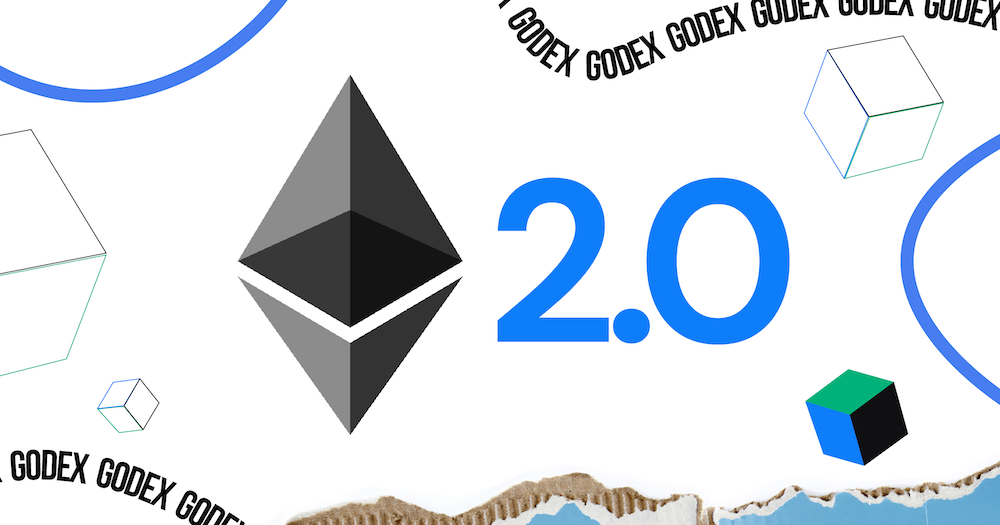Table of Contents
It happened – a decentralized computing platform Ethereum has effectively rolled out the Beacon Chain. It’s Phase 0 toward the whole ETH 2.0 implementation. The proof of stake Ethereum date was supposed to be December 1st, and the dream of many came true with participants presently staking more than $400 million. What does it mean for the investors and the whole crypto industry? Let’s find out.
Ethereum 2.0 Launch Date
The Ethereum proof of stake date was initially scheduled for January 3rd. Then, in a renewed ETH 2.0 plan, it was rescheduled to December 1st. The Beacon Chain launch means the transition from proof-of-work (PoW) to Proof-of-Stake (PoS) models. For now, it’s running alongside the earliest PoW chain.
As per Ethereum Foundation, the Beacon Chain will manage the amplified network of shards and stakers, and its role will change over time. It is also supposed to engage users into staking to ensure the validator software work. The threshold for reaching genesis was 524,288 ETH, and by November 24th, it was successfully achieved. However, users can still stake their ETH deposits to get block rewards.
Why Ethereum 2.0?
The Ethereum 2.0 release is designed to tackle the drawbacks of scaling and accessibility. Its purpose is to remove the inconveniences related to cumbersome networks, shrinking disk spaces, and enormous electricity consumption. The platform needs to solve these issues without losing its decentralized essence.
Ethereum 1.0 and its Problems
The proof of stake Ethereum date is seen as a solution to the problems of Ethereum 1.0. These are gas fees, miserable scalability, and low speed of transactions. Let’s dive deep into each of them.
Gas fees
Ethereum had become the central platform for decentralized application deployment. Up to now, its developers and users face high gas fees. The thing is, the platform uses the PoW consensus algorithm that involves solid computational work output to release blocks and process transactions. As a result, miners who support the work of the entire system need to be paid off.
In 2020, the gas price skyrocketed. Plus, the gas limit has increased to 12.5 million, and the number of transactions per day on the Ethereum network overpassed 1.26 million. Although there’s no fixed amount of gas to be charged, miners pick transactions with greater gas fee and process them faster. Currently, due to high network traffic, the average gas price is likely to grow. Thus, it becomes clear why the Ethereum release date for 2.0. is so awaited.
Scalability
Scalability means the platform can effectively run the elevated demand for requests. The current version of the Ethereum network is not expandable at all. For example, back in 2017, Ethereum dApp CryptoKitties sabotaged the entire blockchain by taking over 10% of network traffic. It has led to insane gas fees and slow transaction processing.
As a comparison, Ethereum handles 15 transactions per second, while EOS (the Ethereum’s worthy adversary) – 3000 tps. Therefore, for many users, the Ethereum 2.0 release date means things will now happen way faster.
When is Ethereum 2.0 Coming Out?
Obviously, December 1st was just the beginning for upgrades, each coming with different timelines. The ETH PoS date has started with the Beacon Chain launch, as we’d mentioned above. Functioning as a separate new chain, it reveals new staking opportunities and paves the way for the following implementations.
The second upgrade – Shard Chains – is scheduled to be brought out in 2021. They are designed to address this scalability issue by expanding the network load to 64 novel blockchains. Shard Chains are supposed to accelerate the transition up to 100 000 tps.
Finally, the third development will be Docking. The phase aims at “solidifying” the main-net Ethereum with the Beacon Chain. This will ensure staking for the whole network and remove energy-consuming mining.
To mention, prior to the proof of stake Ethereum date, there have been phases, such as Frontier, Homestead, and Metropolis. ETH 2.0. launch date is also called Ethereum serenity release date and comprises the three substages described above.
Ethereum 2.0 Price
The Ethereum 2.0 price is expected to grow thanks to an upgrade and an increased demand for transactions and diminished costs. As for validators willing to take part in staking, they will need to acquire 32 ETH that are currently equal to more than $13,000. After the Ethereum 2.0 launch date, the experts suggest that the validators earn an annual return of up to 15%.
Ethereum Courses
Obviously, the platform won’t leave newbies and those seasoned players without proper online courses available right after the Ethereum proof of stake date. They will come in handy to those willing to figure out the creation of production-ready Blockchain-based apps. Developers willing to keep up with all the ongoing improvements will also find them useful.
Ethereum 2.0 Release
Earlier Vitalik Buterin and ETH 2.0 developing team claimed the Ethereum serenity release date to be on July 30th. Later, the team announced the launch of the ETH deposit contract and revealed the genesis block release date. The deposit contract enables users to send ETH from the actual network to ETH2, validating the powers of the stakers. As per the v1.0.0 specifications of the protocol’s second version, the genesis block was supposed to be launched on December 1st.
As it was previously stated, the lowest threshold for engaging in ETH 2.0 staking was 32 ETH. To be launched, there had to be 16 384 validators who, by the ETH PoS date, should have supplied a total of 524 288 ETH. The purpose was successfully achieved by November 24th, 2020.
Conclusion from Godex team
Back in 2014/15, Ethereum paved the way for the DeFi complete transformation. Developers received an exceptional opportunity to generate distributed applications and publish them. The kingdom of decentralized finance has become way broader and client-oriented. Ethereum 2.0 brought about a sound relief to all by eliminating the entry barriers created by the current protocol and making it flat-out more expandable and accessible.
FAQ
Does Ethereum 2.0 increase in price?
Yes, ETH 2.0 will increase in price after the Ethereum 2.0 release date due to a recent Beacon Chain upgrade and ongoing ones. Also, increased demand for transactions and the reduced costs herewith add to the price surge.
When is Ethereum 2.0 Coming Out?
According to the Ethereum roadmap 2020, the proof of stake Ethereum date was scheduled for December 1st, namely by launching the Beacon Chain (Phase 0).
What Are the Main Features of Ethereum 2.0?
After the Ethereum proof of stake date, users can enjoy multiple features, such as faster transactions and bigger accessibility. In a new PoS mechanism, validators replace the miners so that the platform can get rid of burning electrical energy.
Another significant improvement is about parallel processing. In the early PoW mechanism, the blocks used to be mined consecutively and each block could contain a fixed amount of data. This would make the whole process sluggish. Now, ETH 2.0 tackles the problem by sharing out the blockchain among 64 concurrent but interconnecting chains.
Start a Cryptocurrency exchange
Try our crypto exchange platform
Disclaimer: Please keep in mind that the content of this article is not financial or investing advice. The information provided is the author’s opinion only and should not be considered as direct recommendations for trading or investment. Any article reader or website visitor should consider multiple viewpoints and become familiar with all local regulations before cryptocurrency investment. We do not make any warranties about reliability and accuracy of this information.
 Linda Larsen
Linda Larsen 
Read more
EOS is definitely on the list of the strongest and most stable projects in the crypto world. Despite the fact that the currency entered the market less than 3 years ago, it consistently occupies one of the top 10 places in the rating for project capitalization. it is often called the “main competitor of Ethereum”. […]
Ripple (XRP) price has been widely discussed by the cryptocurrency community since it has gained public interest in 2017, even though it was founded by Chris Larsen and Jed McCaleb years before. The platform offers innovative blockchain solutions for the banking sector and has the potential to disrupt the whole finance industry. In recent years, […]
In this article we will talk about Ripple (XRP) and its price prediction. What is Ripple (XRP) Ripple is a San Francisco-based startup that was launched in 2012 by Ripple Labs as a global network both for cross-currency and gross payments. Ripple history began in 2004 with the discussions around the digital coin in the […]
You may well think that an article dedicated to a Tether price prediction or the Tether price in general is a little bit strange — it is a stablecoin after all. However, the price of Tether does fluctuate significantly, although it is nowhere near as volatile as non-stablecoin cryptos. This means that staying up to […]
In the article we share our vision at Zcash cryptocurrency main features and add several price predictions. As cryptocurrencies gain global acceptance and decentralisation slowly enters our lives, privacy becomes the main concern when talking about blockchain adoption. It is no secret that distributed ledger is by far the most secure and transparent technology ever […]
Chiliz coin (CHZ) offers a compelling opportunity for traders interested in the intersection of blockchain technology and sports. By enabling fans to influence team decisions through the Socios app, Chiliz directly monetizes fan engagement and connects with major sports teams like Juventus and Paris Saint-Germain. These partnerships not only enhance the platform’s visibility but also […]